

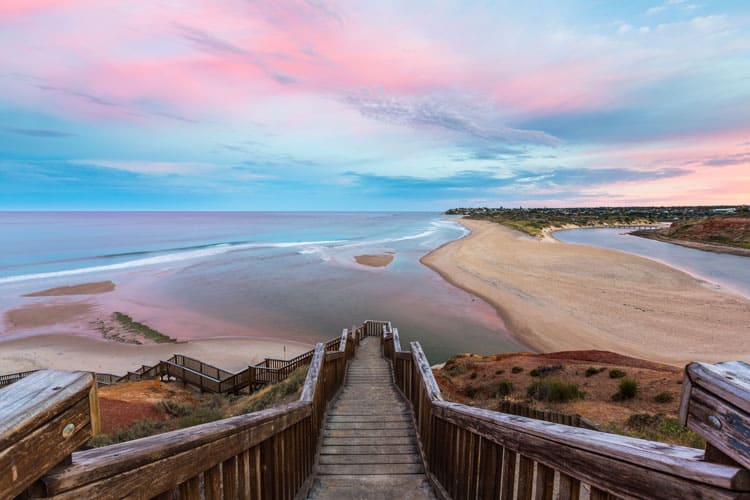
From McLaren Vale to the Barossa, Clare Valley to the Adelaide Hills, there are numerous wine regions within an easy drive of South Australia’s capital city of Adelaide. Just south, the coastal beauty of Kangaroo Island is home to an amazing variety of wildlife, including penguins and the fascinating sea lions of iconic Seal Bay.
From wildlife, outback and beaches to gourmet food and wine, South Australia has so much to offer the discerning traveller. Tempting experiences are as abundant as they are marvellous, with wine regions offering culinary pleasures, gorgeous countryside and welcoming culture. Equally inviting is the tranquil environment of Kangaroo Island, with its exquisite coastal scenery and unique wildlife that is easily accessible, yet untamed in its natural surrounds.
Authentic, generous and diverse, South Australia is a destination where every sense is stimulated and memories are made.
A pleasant 20 minute drive from the CBD is the picturesque Adelaide Hills region. The Adelaide Hills region is a relatively young wine area but a number of wineries have already established international renown. The picturesque rolling pastures, patches of bushland and pretty towns, guarantee a truly memorable drive through the area. The delightful culinary offerings and historic attractions provide plenty of tempting stops along the way. The Adelaide Hills is traditionally known for its fresh and organic produce – pick your own strawberries, taste bush tucker herbs and spices, visit boutique chocolatiers and make your own cheeses.
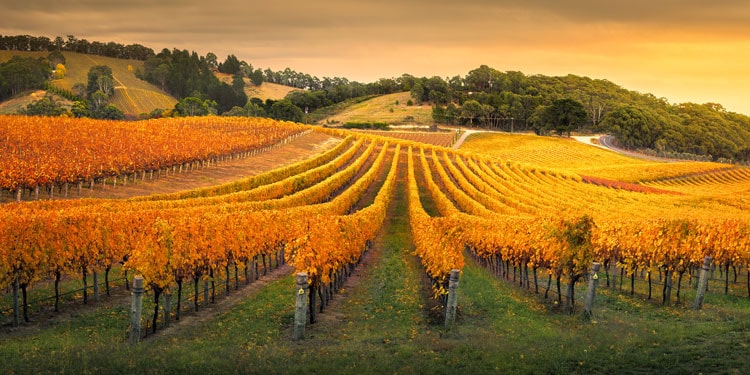
Around an hour north of Adelaide, the Barossa is the home of Australian wine and is the country’s most authentic wine region. It’s a place where the finer things in life are present in abundance. It exudes natural charm and romance; where historic buildings and charming towns are nestled among the region’s leafy hills and valleys. Here, Germanic pride mixes with Australian innovation, resulting in a culture-rich destination that offers much to the visitor.
The Barossa is home to the world’s oldest shiraz vineyards and the region’s strong winemaking history dates back to the 1840s. Today, dozens of wineries are scattered throughout the region, from internationally-renowned names to quaint boutique wineries. Bold shiraz is the Barossa’s signature style, while other varieties including grenache and cabernet sauvignon are also popular. The neighbouring Eden Valley is famed for its rieslings.
The European-influenced food of the Barossa is legendary and is on offer in local markets, specialty produce stores and fine restaurants. The Barossa is also renowned for its dedication to ‘slow food’– the antithesis of the modern day phenomenon of mass produced, fast food. The Barossa Farmers’ Market is perhaps the best place to get a taste of the food culture of the region, while gourmet farm shops and boutique cheese makers are must visit locations for food lovers. Guests can also learn a few gourmet cooking tips at cooking classes hosted by some of the nation’s most accomplished chefs.
The Barossa’s vineyards take on a new beauty when viewed from an entirely different angle. Start the day with a hot air balloon ride or, for a different pace, cruise through the skies by helicopter. Alternatively, feel the fresh country air head-on in a three-wheeled motorbike.
The Clare Valley is where historic townships and vineyards are nestled at the edge of the Outback. The valley’s viticulture story traces back to 1848, when Jesuit priests settled in Sevenhill and began producing sacramental wine. Take a leisurely drive past stone cottages, old world pubs and elegant rows of vineyards. Stop for a glass of riesling at one of the region’s many legendary cellar doors. The Clare Valley is also famed for its 35km Riesling Trail. The trail connects the valley’s picture postcard towns and is a popular riding and walking track for locals and visitors.
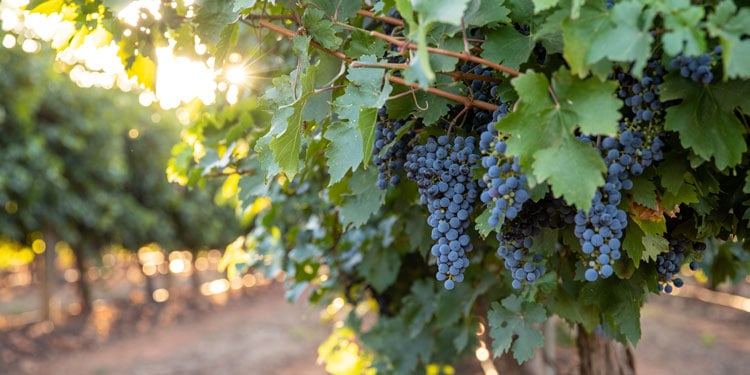
Wine country meets the coast in the picturesque McLaren Vale wine region, which is just an hour south of Adelaide. The contrast of the vineyards and the dramatic coast in this area, led to it being chosen as the backdrop for the critically-acclaimed Clive Owen film The Boys Ae Back. International critics raved about the “manicured vineyards” and “solitary beaches”. With around 60 winery cellar doors, McLaren Vale is the largest and closest to Adelaide of the Fleurieu Peninsula’s wine sub-regions. Langhorne Creek has become a major grape producer for the premium wine industry, while Currency Creek and Southern Fleurieu have some of the oldest and newest boutique wineries in South Australia. Each wine sub-region owes much of its character to its proximity to water. The soft, red wine styles of these regions – particularly shraz, caernet suvignon and genache, are characteristically rich in fruit sweetness.
McLaren Vale is also widely regarded for producing exceptional olives and oils, cheeses, almonds, berries and a range of other local produce. Drop into any of the cellar doors or providores to taste the region’s finest drops and produce. Other must do activities while in the region include a scenic flight over the coast in a vintage Tiger Moth plane, along with a visit to the coveted Willunga Farmers’ Market.
In addition to the top shelf wine, the Fleurieu Peninsula offers mesmerising coastal scenery. The charming town of Victor Harbor is South Australia’s favourite beach destination. It has everything you need for a relaxing family holiday – sun, surf and sand, clear turquoise water, world class cafés and restaurants. There is even a Clydesdale-drawn tram to haul you across a 600 metre causeway to Granite Island to greet the resident Little Penguins. Nestled on the wide, sandy arc of Encounter Bay, Victor Harbor has been the summer holiday choice for generations of South Australians, with safe swimming waters and some of South Australia’s best surf.
Further south, the Limestone Coast region emerged from the Southern Ocean around one million years ago, revealing rich, terra rossa soil and a stunning landscape sculpted by ocean currents. This fertile ground has proven ideal for agricultural and viticultural use, with many premium wines, particularly cabernet sauvignons, produced in the area. There are numerous well-known sub-regions along the Limestone Coast including Coonawarra, Wrattonbully, Mount Gambier, Robe, Mount Benson and Padthaway. These regions are home to renowned, local winemakers. The Limestone Coast’s seafood, lamb and beef are also testament to its exceptional climate and environment.
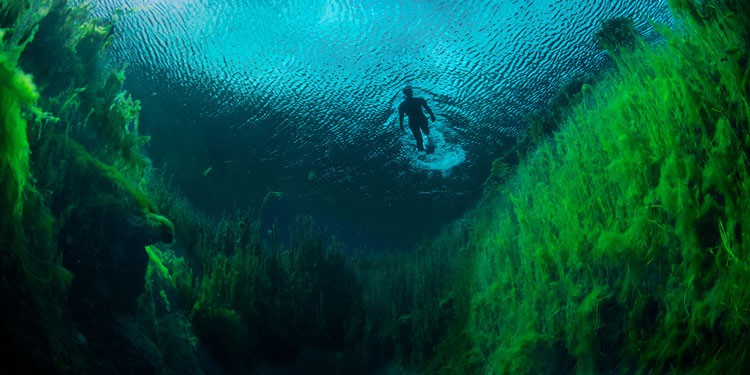
Just off the coast near Adelaide, beautiful Kangaroo Island is known as Australia’s answer to the Galapagos. It is a microcosm of different landscapes and environments with stunning beaches, forests, desert dunes and farmland.
Kangaroo Island is the ultimate place to go to see native Australian wildlife in its natural habitat, so it’s no wonder that it’s been named as one of Australia’s National Landscapes.
When a panel of 522 experts ranked the world’s islands by comparing their commitment to sustainable tourism and preserving the environment, Kangaroo Island came out on top. Its size is surprising – at 155km long and up to 55km wide, Kangaroo Island is Australia’s third largest island. It consists of farmland, coastal hideaways and regional towns that are home to the island’s 4500 human inhabitants.
Kingscote is the island’s oldest and largest township. It was once earmarked to become South Australia’s capital, until a lack of water and poor soil drove most settlers to the mainland. It is difficult to comprehend how hard those early settlers must have worked to ensure their survival and success. Today, their labour and persistence is recognised by a wider audience, thanks to the ever growing influence of tourism on the local economy.
The best thing about Kangaroo Island is that nature is never far away – an echidna wandering across your path is not an uncommon sight, nor are New Zealand Fur Seals, Southern Right Whales, the small but curious Tammar Wallabies, kangaroos, emus, bandicoots, possums and goannas.
Perhaps most popular with visitors is the substantial colony of Australian Sea Lions at Seal Bay on the island’s southern coast. These exotic creatures venture out into the Southern Ocean daily to feed but there are always a considerable number visible on the shoreline. While the hefty 300kg adults maintain a safe distance of several metres, it is not uncommon for inquisitive pups to approach visitors. Travellers find it simply exhilarating to get this close to these land and seafaring wild mammals. An 800 metre boardwalk meanders through the sand dunes. It leads to viewing platforms, where sea lions can be observed surfing the waves or sunning themselves on the beach, against a dramatic coastal scenery backdrop.
Further west on Kangaroo island lies Flinders Chase National Park, a pristine bush environment simply teeming with wildlife. While a range of birds and marsupials inhabit the bush, the striking Cape du Couedic and Admirals Arch are home to a colony of fur seals. At sunset, the evocative view of the arch is simply stunning. The boardwalk that leads down to it offers ample views of the fur seals as they frolic amongst the rocks.
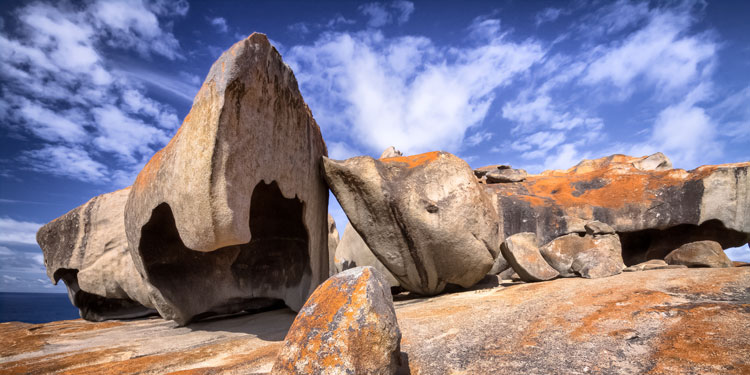
Also in Flinders Chase National Park, perched above the sea, the imposing and thoroughly unique remarkable rocks form what appears to be a cluster of precariously balanced granite boulders. This stunning work of nature has been shaped by the erosive forces of wind, sea spray and rain over some 500 million years. The golden orange lichen covering some of the rocks offers visitors wonderful photo opportunities at different times of the day. There are times when the eye-catching curves in the rock formation and the colours and the shades resemble a Salvador Dali painting.
Vivonne Bay, with crystal clear waters and lush white sands, this beach epitomises coastal perfection. The northern coastline is home to Stokes Bay, a beautiful beach accessible via a cliff ‘tunnel’, which opens out onto the picturesque coast. To your left is a rock pool perfect for children to swim in, while on your right is the secluded coast with waves suitable for surfing.
Emu Bay is an expansive, picturesque, four kilometre long beach with vehicle access. It is one of the most popular beaches on Kangaroo Island with safe, clear water for swimming. Anglers can try their luck from the jetty or launch their boats from the access ramp. Snellings Beach is another popular beach on the island and the view from the top of nearby Constitution Hill is spectacular. At the mouth of Middle River, Snellings is great for swimming and surf-fishing and, at either end of the beach, perfectly set up for rock-fishing.
There’s also much value for the gourmet traveller on the island with wineries, honey farms, specialist sheep dairies, gourmet fish shops and a range of fresh seafood. The lack of large-scale development means that small industry has flourished on the island and now includes a variety of products such as free-range eggs, olive oil, native jams, smoked fish, sauces and marinades. Kangaroo Island’s apiarists harvest honey from the pure strain Ligurian bees, while regional cheeses and yoghurts continue to find a place in food lovers’ hearts. Fresh seafood is featured across the island and seasonally you can enjoy a variety of natural and farmed produce such as oysters, prawns, crayfish, whiting, snapper and unique local delicacies such as freshwater marron.
Accommodation on Kangaroo Island ranges from upscale, lavish six star coastal resorts and exotic wilderness retreats to mid-range, budget friendly accommodation, especially within the main townships of Kingscote and Penneshaw. Many accommodation providers can also arrange island tours tailored to the interests of their guests.
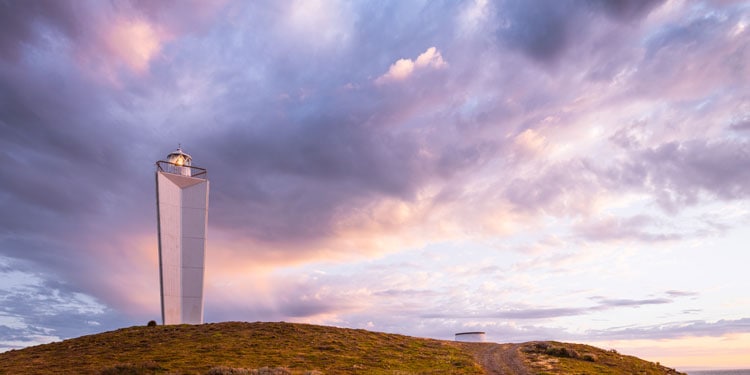
Fantastic wildlife, great nature-centric accommodation, a strong local food culture and stunning scenery are enough to entice anyone to Kangaroo Island for some family time or indulgent relaxation. The island is accessible from the mainland via ferry from Cape Jervis to Penneshaw and flights operate between Adelaide and Kingscote.
At Murray Street Vineyards, wine is in their blood. Winemaker Andrew Seppelt has a legacy to fulfil and a passionate team to help him do it. They believe that great wine begins in the vineyard, so have chosen sites that sing with expression and have cared for them with restraint and respect.